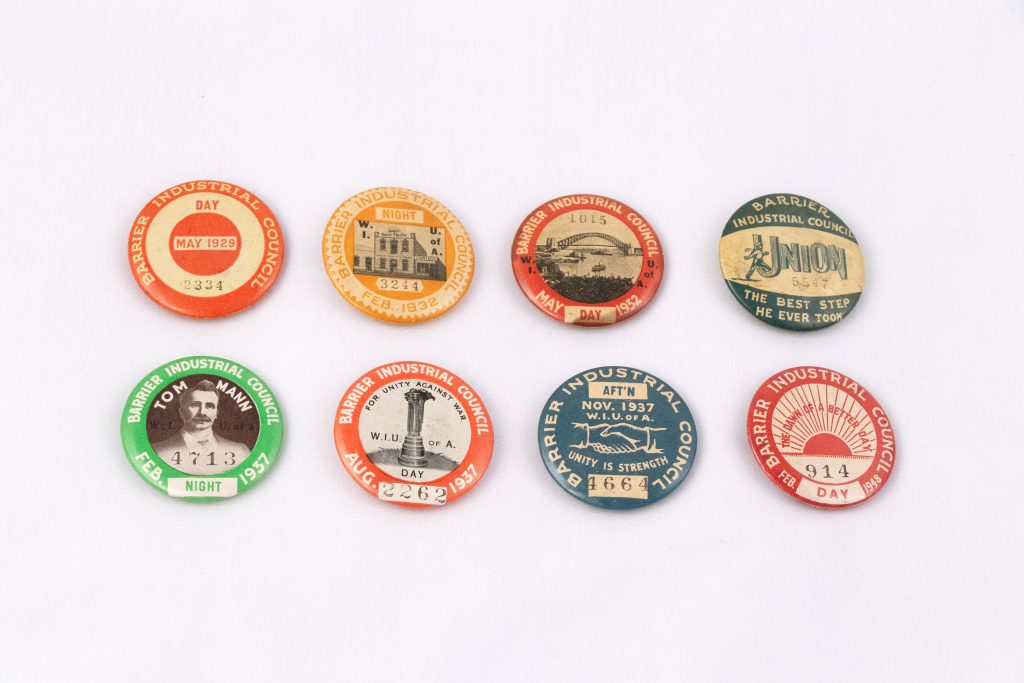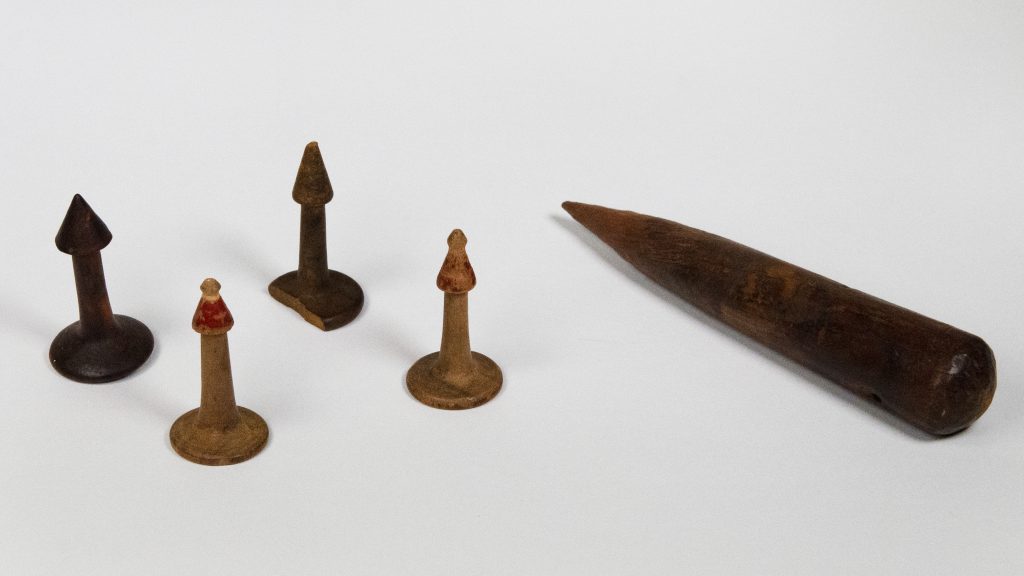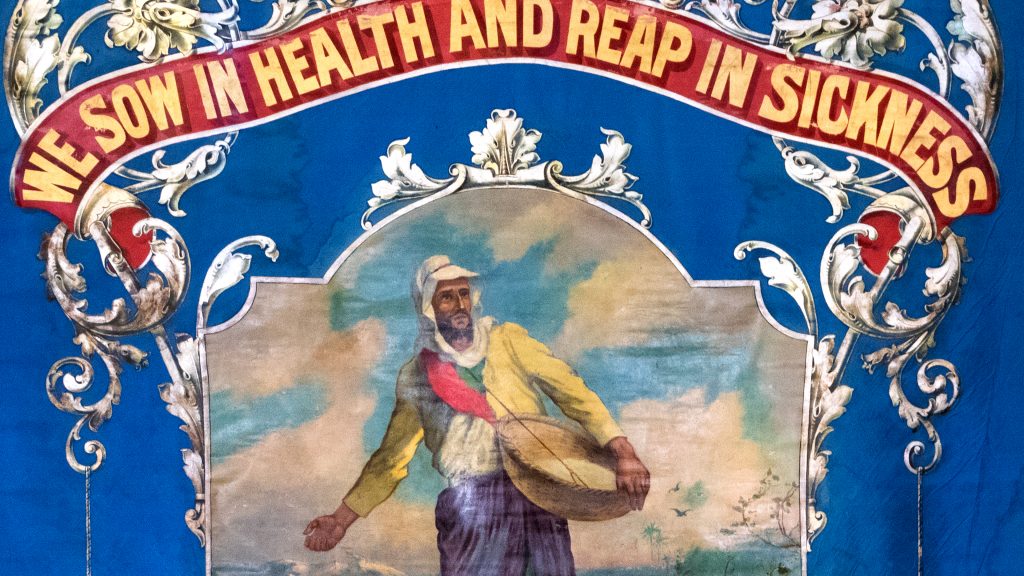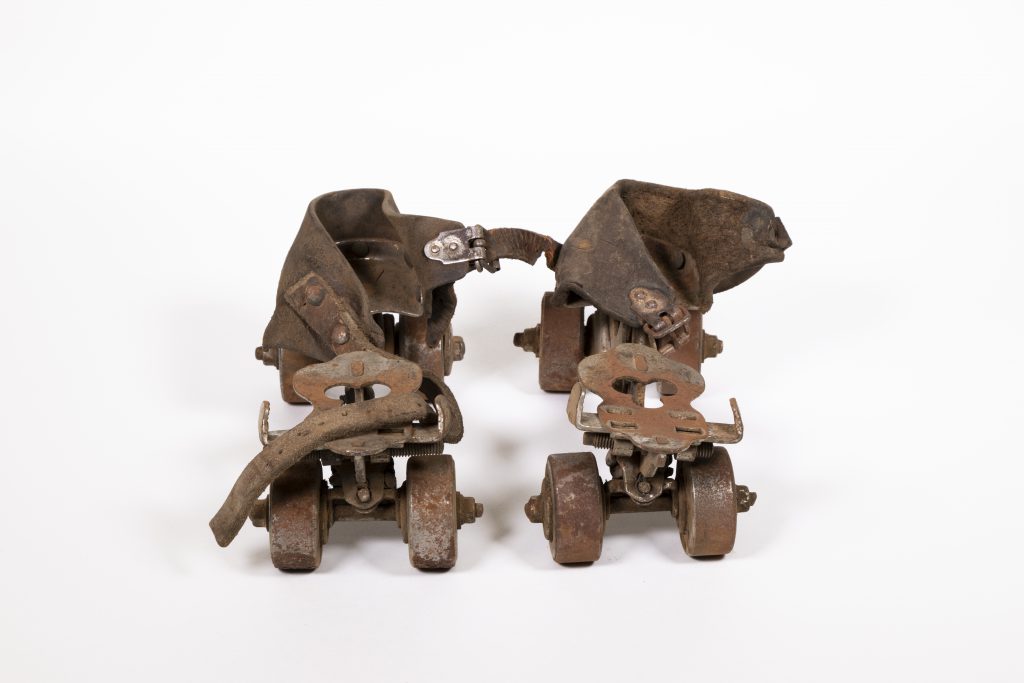
The son of one of the earliest Ukrainian Jewish migrants to Broken Hill, Ralph Krantz (1879-1948) was a central figure in the town’s entertainment industry in the mid-1920s. He bought the Crystal Theatre and roller skating rink in 1924, adding a glittering jewel to his empire’s crown in 1926 – a dance and supper club […]
Read More…
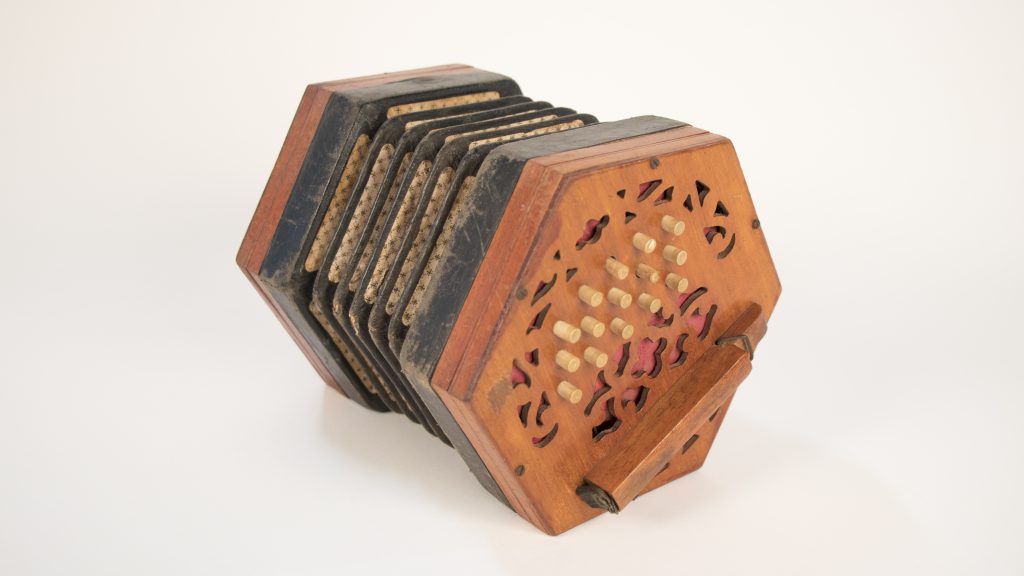
In the nineteenth century, among the traditions migrants brought to NSW was music. This included European band music and as many regional centres established town bands were formed. By the late nineteenth century the village of Eugowra, in the state’s central west, had its own town band. Among its members was Harry Esperance who rose […]
Read More…
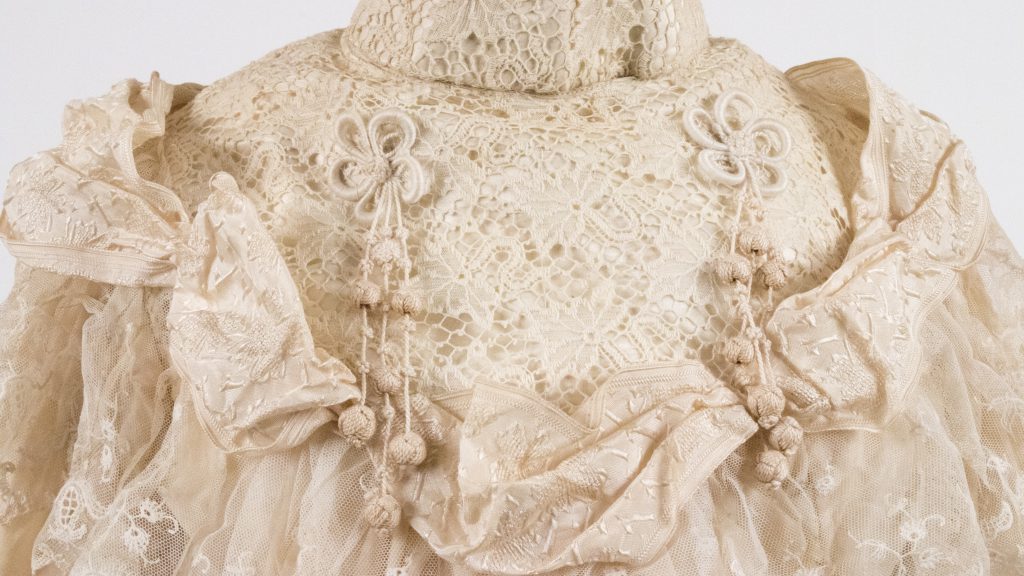
In Australia throughout the twentieth century wedding dresses were often kept as a reminders of a woman’s transition to her new life as a wife, and for most women, mother. As a historic garment, a wedding dress can tell us a number of things, including information about the wearer and the times in which it […]
Read More…
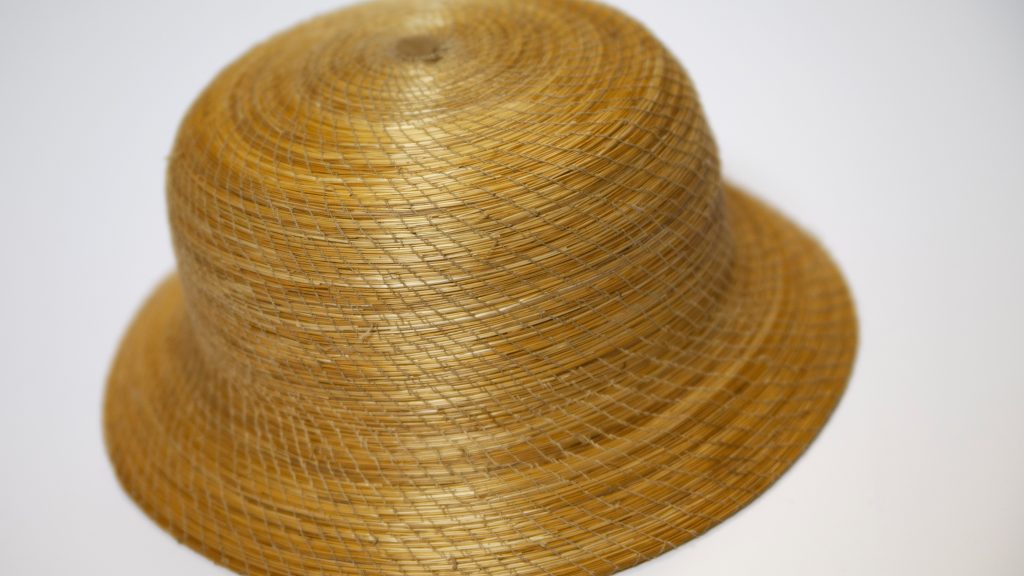
Coiled straw work, also known as lip work, has a long tradition and is practiced by many cultures from around the world, including Anglo-Celtic cultures. Margaret Casey, who was born to an Irish father and English mother, learnt and used the coiled straw technique to craft this sun-hat in the 1880s. She made it from […]
Read More…
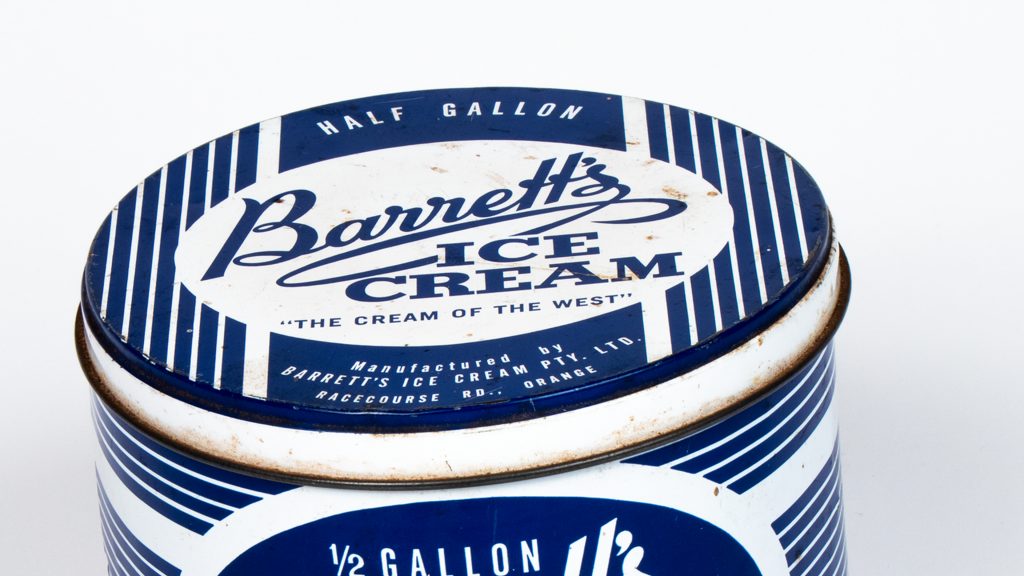
Barrett’s Ice Cream, the ‘Cream of the West’, was sold during the mid-1960s in this round blue-and-white tin. Barretts also packaged their ice cream in a waxed, rectangular cardboard container known as ‘The Brick’. For obvious reasons, this once-familiar packaging has not survived. Barrett’s Orange-based ice cream business was founded by Walter E. Barrett in […]
Read More…
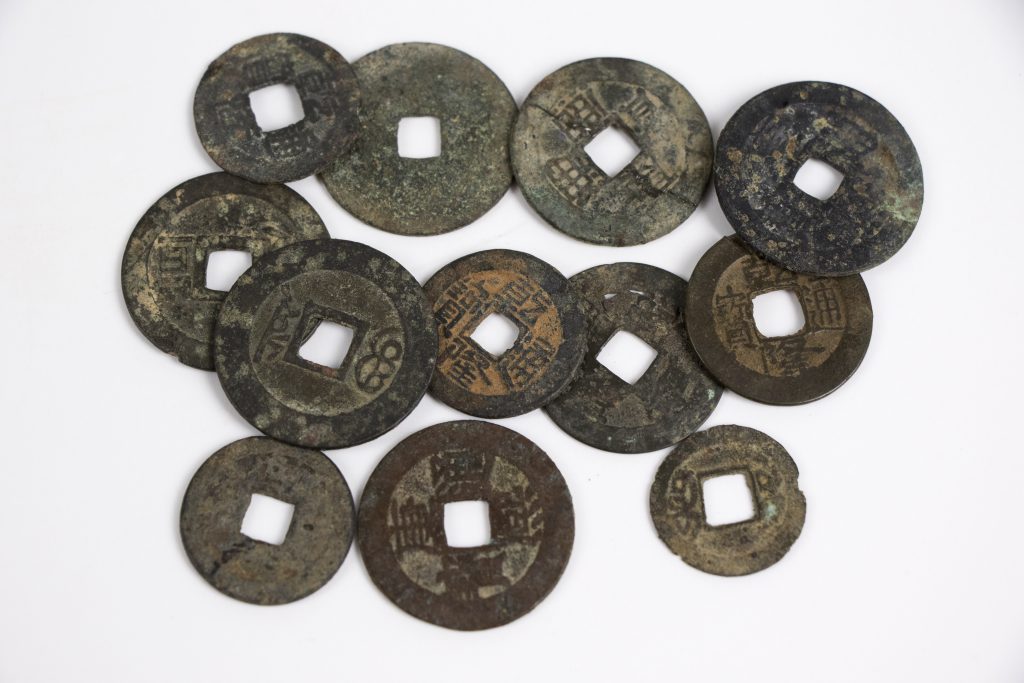
In 2006 a number of Qing Dynasty coins were uncovered at the northern end of Fitzmaurice Street in Wagga Wagga. Originating in China they are tangible evidence of the Chinese ‘camp’ located there, alongside the Murrumbidgee River, in the closing decades of the nineteenth century. The story behind the coins reveal one of the many […]
Read More…
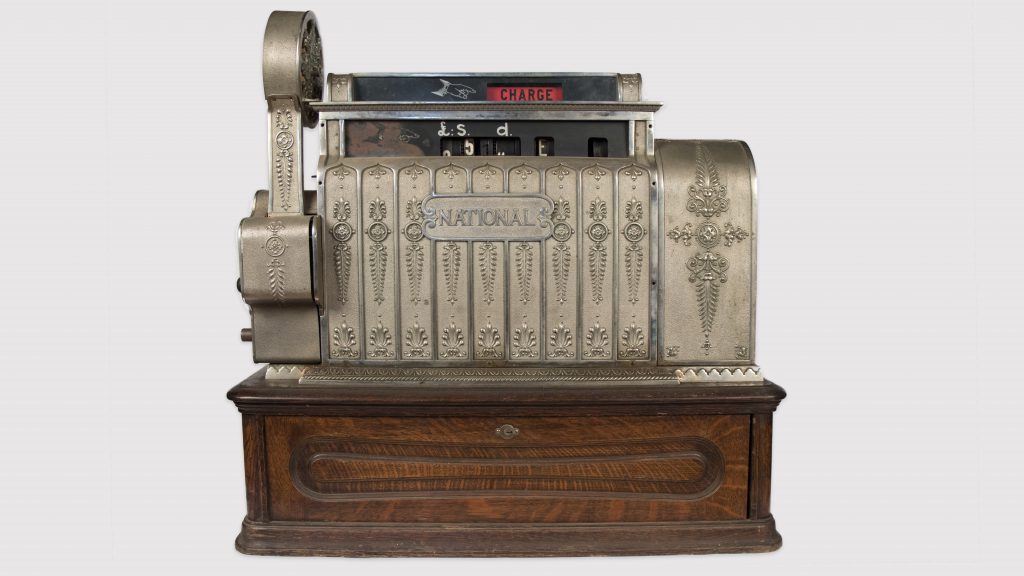
Around 1905 Walter Bennett installed this impressive cash register at his general store, located on Pym Street in Millthorpe, near Orange. Marketed as the ‘incorruptible cashier’, the solid and beautifully designed register, made of brass and timber, took pride of place on Walter’s shop counter. With each sale the mute machine came to life, when […]
Read More…




